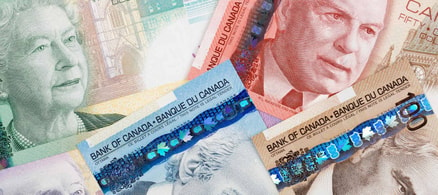Is a patent necessary?
In some instances, securing a patent is absolutely necessary.
The discovery of a new drug, for example, often requires millions of dollars in development costs. The capital that pours into drug research, however, doesn’t make it any harder to copy a new formula. If a drug company were to lose control of its intellectual property, not only would it miss out on any future profits, but the money used to develop the drug might as well have been shot into space.
Young tech entrepreneurs thinking they have the next Shopify or Facebook percolating in their brain pans might be under the impression that their IP is especially worthy of patenting. David Rowat, partner at Vancouver-based investment bank Strategic Exits, says that’s not always so.
“The technology moves so quickly that by the time you finish patenting your invention, the industry has moved on, and it's of no further use,” Rowat says. “So there's an awful lot of time and effort that might go into patenting something that doesn't really provide you the benefits that you think you're getting.”
Before rushing out to file any patent applications, it’s best to enlist the services of an IP lawyer who can tell you if your invention is worth running through the patent process spanking machine.
Maximize Your Tax Refund with TurboTax Canada!
Simplify tax season with this user-friendly software. Get step-by-step guidance, maximize deductions, and file with confidence. Trusted by millions, TurboTax Canada ensures accuracy and peace of mind. Start your taxes today and get the refund you deserve
Get the tax refund you deserveThe patent process in a nutshell
There aren’t generally many steps involved with getting a patent. But each one comes with its own set of costs and possible stumbling blocks.
1. Applying for your patent
If a patent lawyer has given you the go-ahead and deemed your pursuit of a patent worthwhile, it’s time to start filling out paperwork.
First off, you’ll want to apply for a patent in the U.S., simply because it’s one of the world’s biggest marketplaces. Rowat says the cost of filing for a patent in the U.S. isn’t much — generally a few hundred dollars — but since the fee is based on the size of the company applying for the patent, its size can vary.
Ensuring your application is on point is going to require working closely with a patent attorney and paying handsomely for her services. You may find lawyers willing to steer your product through the process for $5,000, but consider that the cheap and dirty route. A budget of $10,000 to $20,000 is more realistic, according to Rowat.
In addition to ensuring that your application covers the granular details of how your IP works and why it’s unique, you’ll also need to think strategically about how broad you want your patent to be in terms of what it tries to establish as original. Going broad may sound like it will give you the most coverage, but such patents are rarely approved.
If you plan on filing for patents in multiple other countries, you’ll also want to familiarize yourself with the Patent Cooperation Treaty.
For a fee, the PCT allows inventors to announce an intention to patent their IP and then gives them 18 months to decide if they want to follow through and officially file for a patent with the Treaty’s more than 150 member nations. The initial PCT application can cost close to $5,000.
2. Defending your patent application
Here’s where things slow right down.
All patent applications have to be examined, evaluated and compared to similar patented products that came before them. This can take years.
And your application may still be rejected. When filing with the U.S. Patent and Trademark Office, it’s common for applicants to receive an Office Action, or letter stating why the patent is not being approved.
Even in cases where inventors have paid extra for fast-track status, Office Actions are common occurrences.
“Every single patent is rejected on the first application,” Rowat says. “They will come up with a bunch of reasons why, and then it's up to you to research and decide if you want to challenge their assumptions,” by engaging your patent lawyer’s services, developing counter arguments and wading into the fray again.
Some rejections may be because of deficiencies in the application itself, but others will be the result of unanswered questions regarding your IP. Either way, the time and money required for the defense of your application needs to be baked into your patent budget.
How much protection does a patent really give you?
Let’s say your patent application in the U.S. is successful. Congratulations. Assuming you don’t feel a need to go through the same rigamarole in dozens of other countries, your IP is safe.
But only to a certain extent.
Defending a piece of intellectual property in court, which can cost millions of dollars, is not something every company can afford to do. If a corporation worth billions, like a certain web search behemoth, decides to make use of IP that is suspiciously similar to another company’s, like its innovative map application, they may choose to use it anyway, get sued and let the court costs slowly pummel the original inventor into settling with the offending party — and potentially kissing their precious IP goodbye.
“A patent,” Rowat says, “is only as good as your ability to defend it.”
Sponsored
Trade Smarter, Today
With CIBC Investor's Edge, kick-start your portfolio with 100 free trades and up to $4,500 cash back.






